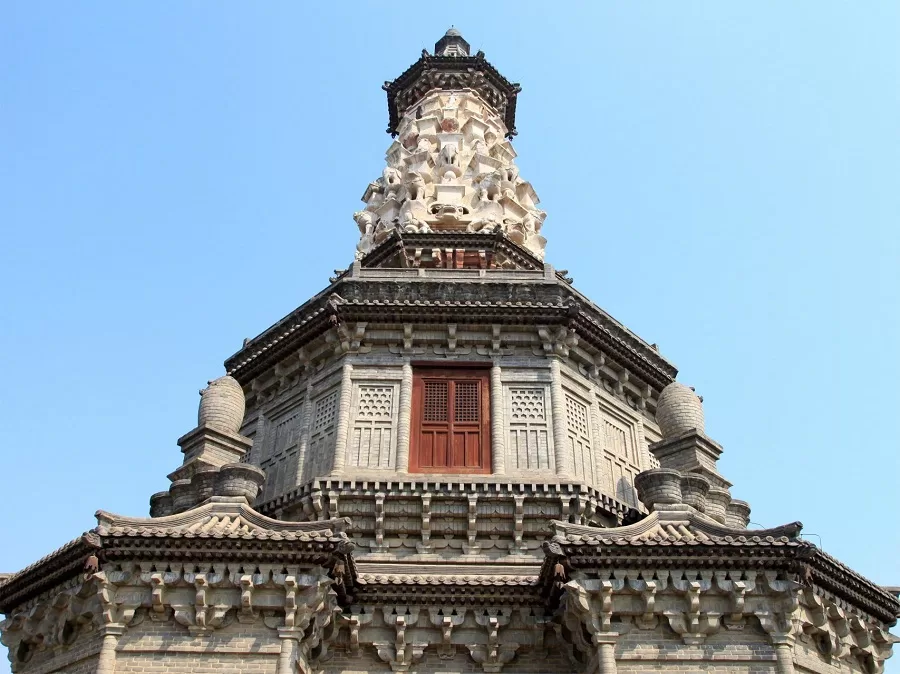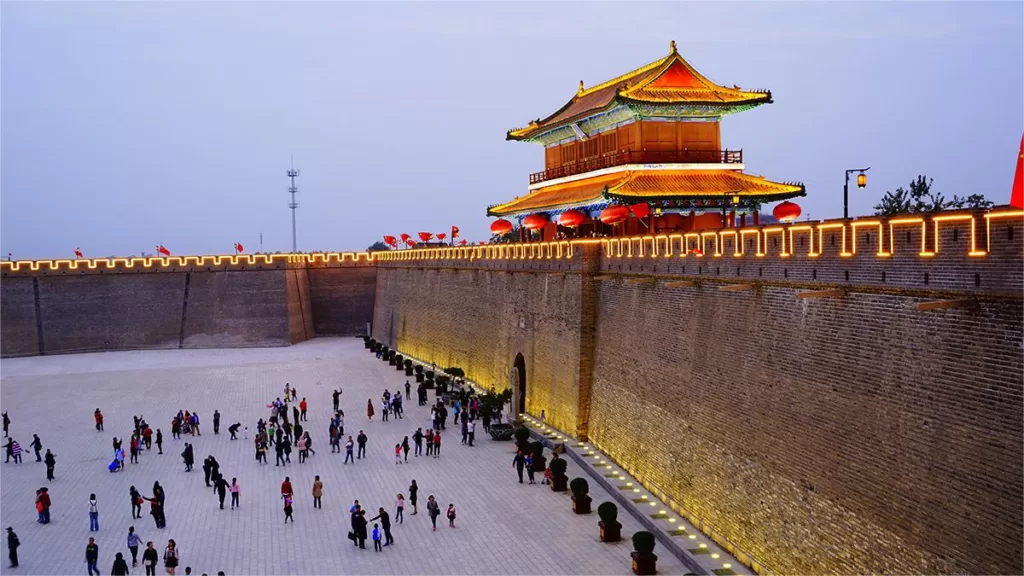In the heart of Zhengding, Shijiazhuang, a captivating relic of China’s architectural history stands tall – the Guanghui Temple’s Hua Pagoda (广惠寺华塔), affectionately known as the Duobao Pagoda or the Multi-Treasure Pagoda. This extraordinary structure, nestled within the annals of time, serves as a poignant reminder of the region’s rich cultural heritage and resilience, despite the trials of history that have left it standing alone, separated from the temple it once belonged to.
Basic Information
| Estimated Length of Tour | 0.5 – 1 hour |
| Ticket Price | 15 RMB |
| Opening Hours | 8.00 – 18.00 |
Location and Transportation
Guanghui Temple’s Hua Pagoda is located to north of the urban area of Shijiazhuan, Hebei Province. Its exact address is No. 318, Yanzhaonan Avenue. To get there, tourists can take bus 130 or tourist line 1 and get off at Guanghui Temple Stop (广惠寺站).
Guanghui Temple
The Guanghui Temple, which once housed the magnificent Hua Pagoda, met a tragic fate during the turmoil of the late Qing dynasty, when the ravages of war led to its destruction. Now, only the Hua Pagoda remains, a solitary sentinel that defies the passage of time, carrying with it the echoes of devotion and artistic mastery that once thrived within the temple’s walls.
Origin of the Hua Pagoda

Legend intertwines with reality when tracing the origins of the Hua Pagoda. According to local lore, its construction dates back to the illustrious Tang Dynasty, said to have taken place between 785 and 804. However, as history often weaves a complex tapestry, deeper analysis of historical documents and architectural characteristics suggests an alternative narrative. Scholars propose that the pagoda might have been erected during the Jin Dynasty, spanning from 1115 to 1234. This era was marked by creativity and innovation in the arts, making it a plausible period for such an architectural marvel to come into being.
Intricate Design
The Hua Pagoda’s sheer magnificence emerges through its physical form and intricate design. Rising with elegance, it boasts four floors that ascend to a height of 40.5 meters, a towering testament to the ingenuity of its creators. Comprising a central main pagoda and encircled by four smaller accessory pagodas, its octagonal shape captures the eye and evokes a sense of symmetry and harmony.
Exquisite Carvings

Constructed entirely from bricks, the Hua Pagoda is a masterclass in craftsmanship and architectural finesse. The exterior is adorned with meticulously carved figures, a visual narrative that tells stories of spirituality, myth, and symbolism. The third floor stands out, adorned with exquisite Buddha statues, intricate depictions of tigers, dragons, and elephants. These carvings not only showcase the skilled hands that shaped them but also invite contemplation and reverence from all who behold them.
Overall Shape
The name “Hua Pagoda” holds a poetic significance, drawing parallels to the unfurling petals of a flower. This nomenclature mirrors the pagoda’s graceful and intricate design, transcending its physical attributes to encompass the spiritual and cultural essence it embodies.
Emblem of Endurance

As the sole survivor from a bygone era, the Guanghui Temple’s Hua Pagoda is an emblem of endurance, a tangible bridge between history and the present day. Its origins remain shrouded in mystery, its stories waiting to be unraveled by the curious and the contemplative. Amidst the rapid evolution of the modern world, this pagoda remains an immovable anchor, a testament to the artistic brilliance of China’s past and a silent witness to the generations that have marveled at its beauty.






